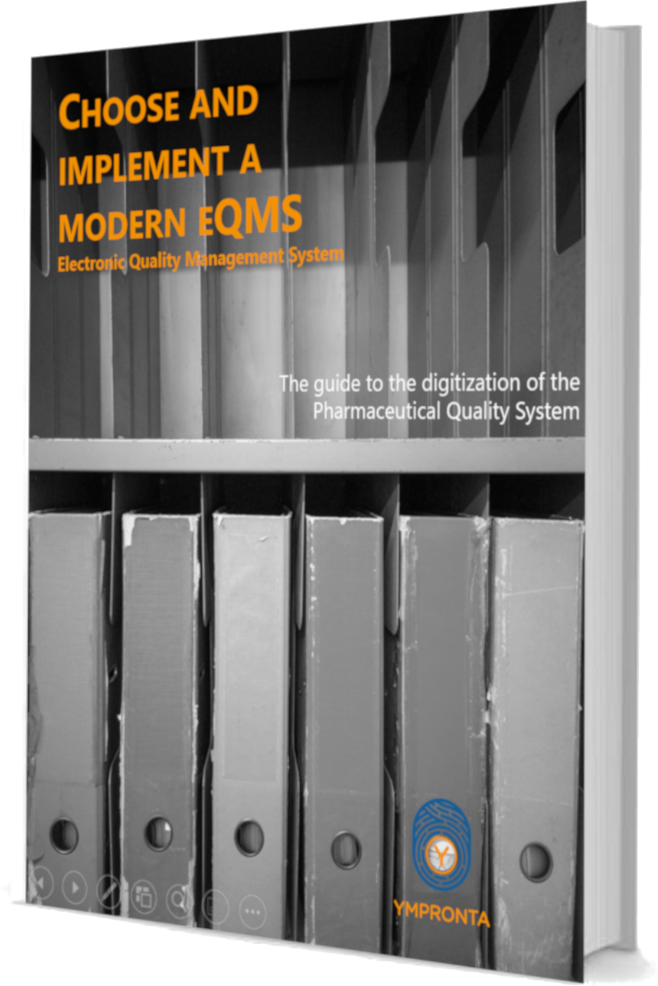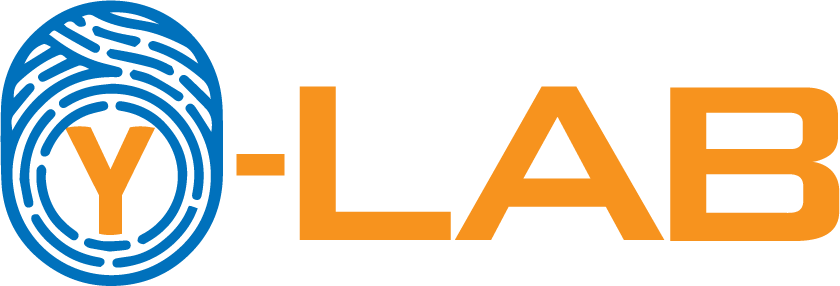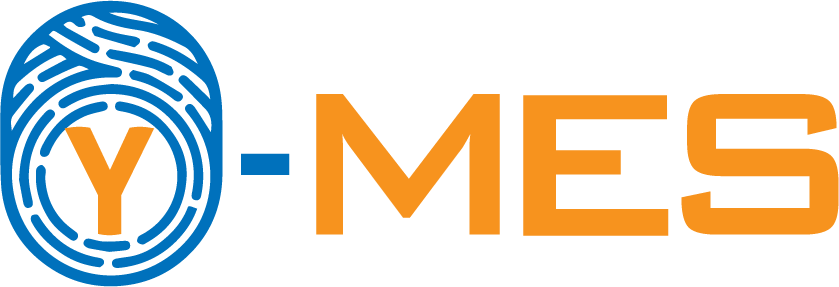Paper might seem like a convenient option for managing production data, batch records, SOPs, trainings, CAPAs, change controls, validations, etc. Paper management is still widespread among many pharmaceutical companies and seems to have no viable alternatives. But it could turn out to be an illusion, especially if we only consider the cost of reams of paper. In this article we will try to identify the criteria that will give us a clear vision on the real costs of a paper quality system.
Quality products and services are not born by chance. Quality and compliance with regulations always derive from corporate Quality Systems, robust and effective. But since QMS is one of the most important cogs in the pharmaceutical business, it must also be efficient. Wanting to go to extremes, if to guarantee the quality of your products, you have to spend more than you can get from their sale, your quality system from perfect becomes useless.
If you've stayed true to the paper for years, finding out its true cost may come as a surprise. The belief that paper is cheap may stem from its practicality. It is too convenient to be able to write down something quickly in pen. In this the paper is unrivaled. And all the staff will certainly agree on this, because they are used to this and because on the individual level this is the right view.
Global costs, on the other hand, do not closely affect individual employees, sometimes not even those who are part of the QA. The burden of managing the quality system is fully delegated to the Quality Assurance managers. They are the ones who have the worst headaches in the case of a paper QMS. And since quality is one of the pillars of any Pharma company, it would be good for everyone to put themselves in the shoes of their QA colleagues, live their experiences, and get an idea of how many steps they need to take to ensure compliance and to keep records in order.
THE JOURNEY OF THE PAPER TROUGH THE QMS
Before diving into the paper cost analysis, let's explain the context a bit. Each compliance standard comes with a long list of mandatory documents. This heritage, which includes policies, procedures, certificates, templates, and more, is subject to review by regulatory bodies.
For example, to obtain ISO 17025: 2017 certification, (an international standard for the operation of laboratories) it is necessary to present at least the following documents:
More generally, in any Life Science company the following are also fundamental:
Put together and grouped by area, the folders can contain hundreds of pages. The cost of paper and toner alone for all of these sheets is substantial. Companies, on average, spend around 5% of their turnover on printing. And quality management documents make up a major part of printed material.
But you'd be surprised to know that handling paper throughout its life cycle can cost as much as 31 volte the cost of the paper itself:
HOW MUCH DOES PAPER-BASED COMPLIANCE COST?
Paper has always been the universal proof of compliance and is still the primary medium for legally binding documents.
Many companies start with a set of written templates and procedures that meet the minimum criteria needed to achieve their quality goals. As companies grow, managers develop more or less structured word templates, spreadsheets and archives trying to optimize operations.
At a certain point, convinced that the cause of the problems is the type of paper support, some companies adopt a digital DMS . This is a typical mistake because, as we will see later, the most important part of the costs is due to the operation and not to the paper itself.
Paper itself
Statistiche reveal that only 18% of companies are full paperless, while 82% of companies adopt paper everywhere.
Labor
This is among the most full-bodied part:
manual archiving
destroy and disposal
updating, synchronization and traceability of documents
search for documents and signatures
The following report says that the average cost to archive a paper document is $ 20. Multiply that by the hundreds, if not thousands, of documents stored in your company each week.
Physical archive
It includes the cost of shelving compliant with safety requirements (e.g. fire protection).
The effort of designing physical archives
The effort of designing archive management procedures
The cost of securing paper documents
The cost of the space that could be used better (e.g. warehouse)
Errors due to paper handling
loss of documents: the cost, in this case, depends on which document is lost and for what occasion it was needed. It can be especially bad during an audit, where the loss of a single document could set off a costly chain reaction.
misplaced documents. To the cost of the time wasted on research, the cost of any stop of the processes that depend on the document in question must be added
On average, companies lose one in twenty paper documents. The effort spent on research costs an extra $ 20 in labor costs. And if you were to reproduce one, you could spend up to $ 220.
Compliance
The traceability of processes, document changes and objective evidence are fundamental. If something wasn't documented, it never happened. It is an axiom and someone can use it in their favor.
Cost of limited traceability (risk to integrità dei dati)
Cost necessary to keep documents updated and to demonstrate the traceability of changes.
Cost of obsolete documents still in circulation (risk of application of procedures that are no longer valid with unforeseeable consequences)
Cost of to long inspections due to the difficulty in tracing the documentation
Skills
A paper QMS requires the hiring of the most qualified personnel and frequent training. In addition to having to be aware of all the risks and possess specific skills (made obsolete by automazione e digitalizzazione) new hires take more time to learn the physical structure of the current QMS.
Risk management (contingency)
Non-compliance is probably the biggest risk for a pharmaceutical company. For this reason, most of them budget a contingency that can be used in case of disputes.
In addition to this, risk management generally becomes slower and more complicated, requiring qualified personnel and additional resources.
Fines imposed for violazione delle normative could cost tens of thousands of euros, regardless of image damage and possible litigation costs if customer data is compromised due to lack of control of paper documents. And the exchange of documents in electronic format, by e-mail or through shared folders, only partially solves the problem.
Organization and integration with other departments
These are costs due to decentralization and the absence of a single source of truth. Lo scambio di dati, relativi alla qualità, tra i “silos” is fundamental. Paper management causes:
frequent alignment meetings
inefficient exchange of information and documents
fragmentation, when documents are scattered around the company (often forgotten) and their research requires great effort and waste of time
the time taken to cross-check documents
Staff motivation
Organizational difficulties can also occur in small companies. In the worst cases the daily operation becomes unsustainable and the constant pressure and fear become unbearable. This inevitably leads to the worsening of the working environment, continuous conflicts and "rebounding" responsibilities. This leads to a decrease in staff performance and an increase in turnover.
All this constitutes unjustified costs for the company.
Go-to-market and batch release time
If you are developing new products, every day of delay due to inefficient paper is lost revenue. If you are releasing a batch of a drug during a period of high demand, each day of delay is the profit given to the competition. But even if you work in Make-to-Order mode, and you exceed the deadline agreed with the customer, you are putting your relationship at risk, which in the end can suffer a very high economic impact.
This represents unjustified costs for the company, as well.
Lack of focus on the core business
The constant anxiety and concentration on paper processes steal precious energies that could be used in far better ways. For example, focusing on real work, such as manufacturing, or miglioramento di processi .
This represents unjustified costs for the company, as well.
Lack of flexibility, scalability, agility
A quality management infrastructure that relies heavily on paper cannot transform quickly . There is little room for maneuver to adapt to constant changes, which inevitably results in the lack of flexibility of the entire company.
Missed technological progress
Since QMS is the backbone of the entire company, if it remains on paper it blocks the development of the rest of the company as well. Similarly, if it is a technologically advanced system it can give an important impetus to the digitization of the entire company.
CONCLUSIONS
In today's world, which has become “data-driven” and “information-centric”, a quality system based on paper seems an abomination. In addition to not bringing any added value, it slows down the development and growth of the company which risks being stifled (in some cases even before the birth).
The real cost of paper is not the few euros spent on the ream. If we consider all the processing and risks that a document is subjected to during the quality management process, we will realize how expensive paper can be.
Unfortunately, paper elimination may not be a realistic goal for many companies, especially in their quality system, where paper is a guarantee. But with the possibilities offered by technology today, this belief is a thing of the past, and a passaggio graduale to an eQMS can be an achievable goal, becoming an important step towards digital quality culture.
And the drastic reduction of costs, combined with the general improvement of the working environment, seem to us an excellent motivation.
Cost of the transition
If you think digitizing your QMS makes sense, the first question that will likely arise will be:
How much time and effort does it take to switch from a paper QMS to an eQMS?
We will answer this question in our next article.




How much does a paper-based QMS really cost?